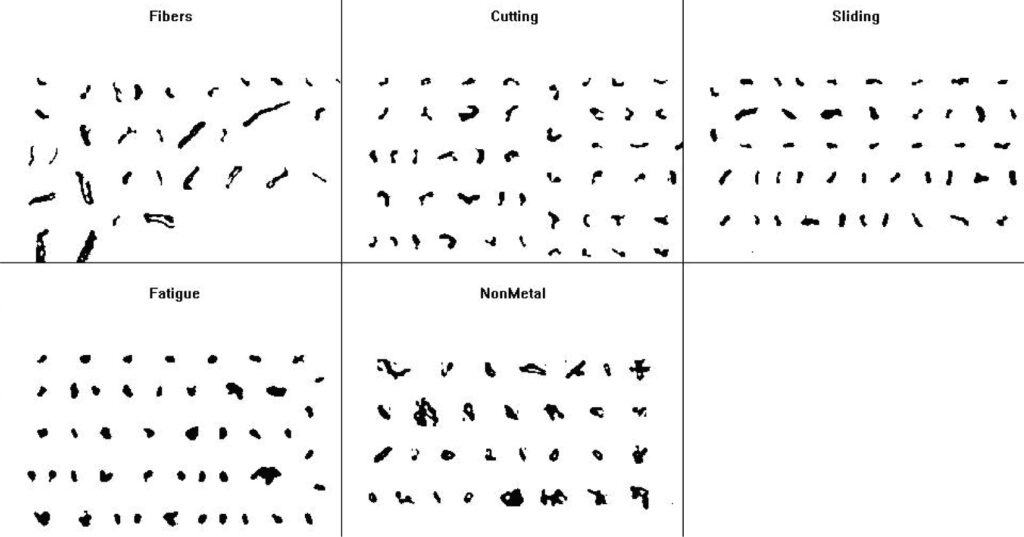-
myLab
-
Services
-
- Acid Number
- Analytical Ferrography
- Base Number: ASTM D2896 vs. D4739
- Crackle Test: Monitoring Water in Used Oil
- Demulsibility
- FTIR Direct Trend Methodology
- Fuel Distillation (ASTM D86)
- ISO Particle Count
- Karl Fischer Water Titration
- Optical Particle Classification (OPC)
- Remaining Useful Life Evaluation Routine (RULER)
- SEM-EDS Wear Debris Analysis
- Total Magnetic Iron (TMI)
- Varnish Potential
-
-
Sampling
-
- Coolant Sampling Procedures
- Grease Sampling Procedures
- Oil Sampling Basics (Short Course)
- Oil Sampling Procedures (Video)
- Oil Sampling Procedures: Good-Better-Best (PDF)
- Sample Collection Basics
- Sampling Oil Using a Drain Plug
- Sampling Oil Using a Pushbutton or KST-Series Valve
- Sampling Oil Using a Sample Pump
- Sampling Oil Using Thread-On Probe Style Valves
- Used Oil Filter Sampling
- Sampling from Filter Carts
-
-
Data Interpretation
-
- Analytical Ferrography Reporting
- Basic Testing Interpretation (PDF)
- Common Wear Mechanisms (PDF)
- Comparison: Wear Debris Analysis Technologies
- DEF Specifications: ISO 22241
- DEF Testing: Data interpretation
- Oil Cleanliness: ISO vs. NAS
- Potential Source of Spectrometry Metals (PDF)
- Reading the OA Report (PDF)
- Understanding ISO Particle Counts (PDF)
- Wear Metal Origins (PDF)
- Why Diesel Fuel Dilution is Bad for Your Engine
-
- Data Interpretation Process (Video)
- Data Interpretation: Compressors (Video)
- Data Interpretation: Diesel Engines (Video)
- Data Interpretation: Grease Analysis for Wind Turbines (VIDEO)
- Data Interpretation: Hydraulics (Video)
- Data Interpretation: Natural Gas Engines (Video)
- Data Interpretation: Oil Analysis for Wind Turbines (Video)
- Data Interpretation: Reducers (Video)
- Data Interpretation: Turbines (Video)
-
-
Whitepapers
-
Success Stories
- Unlocking Millions in Maintenance Cost Savings
- Strategic Optimization of Oil Drain Intervals
- The Case for Building Strong Partnerships
- Case Study: Extended Drain Interval
- CARE & Oil Analysis for Early Detection of Issues
- Fuel Dilution of Engine Oil in Mining Dozer
- Early Detection of Wear Metals in Gearbox
- Coolant Contamination in Dozer Engine Oil
-
FAQ
-
Release Notes
Optical Particle Classification (OPC)
Overview
Optical Particle Classification (OPC) is an effective method for determining the particle count and the level of contamination in a lubricating system. OPC testing is ideal for wheel motors, differentials, transmissions, gear boxes, wheel hubs, and final drives.
OPC combines the standard oil analysis techniques of:
- Particle counting
- Advanced shape classification
Why is OPC one of the most current and effective analysis methods?
- Intrinsically accurate particle counting
- Particle shape recognition
- Good reproducibility
- Ability to measure samples with very high particle concentration
How it Works
Particle Counting
Thousands of images are processed to obtain good counting statistics. Particles are analyzed and quickly differentiated by size. Using the direct imaging capability of the latest equipment, the exact particle size of the contaminant is quickly determined.
Advanced Shape Classification
The OPC method classifies particles greater than 20 ʯm by using a neural network. An algorithm is used to sort particles into many categories.
- Cutting: Adhesive wear
- Fatigue: Metal stress that leads to wear particles
- Severe Sliding: Shearing between moving surfaces
- Non-metallic: Non wear metal contaminants
- Fibers: Fibrous materials
Maintenance Solutions
Once a maintenance technician has the results from the lab to determine the particle count and the level of contamination in a lubricating system, a course of action can be taken such as:
- Adjusting or optimizing oil change intervals.
- Modifying their maintenance schedule.
- Doing further testing to determine root cause of contamination.

